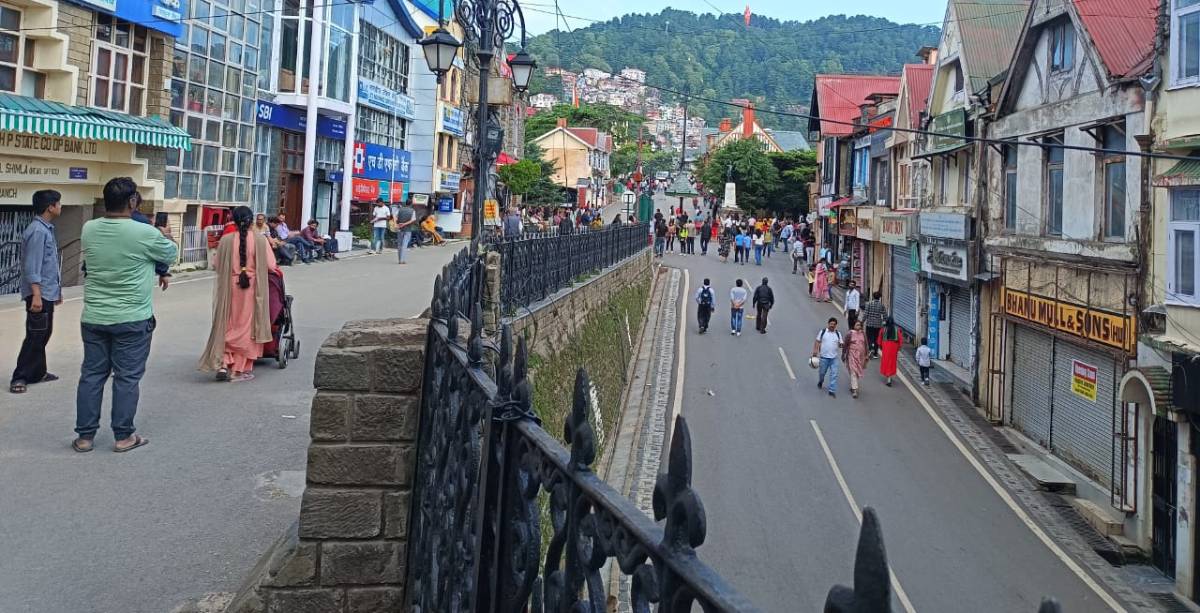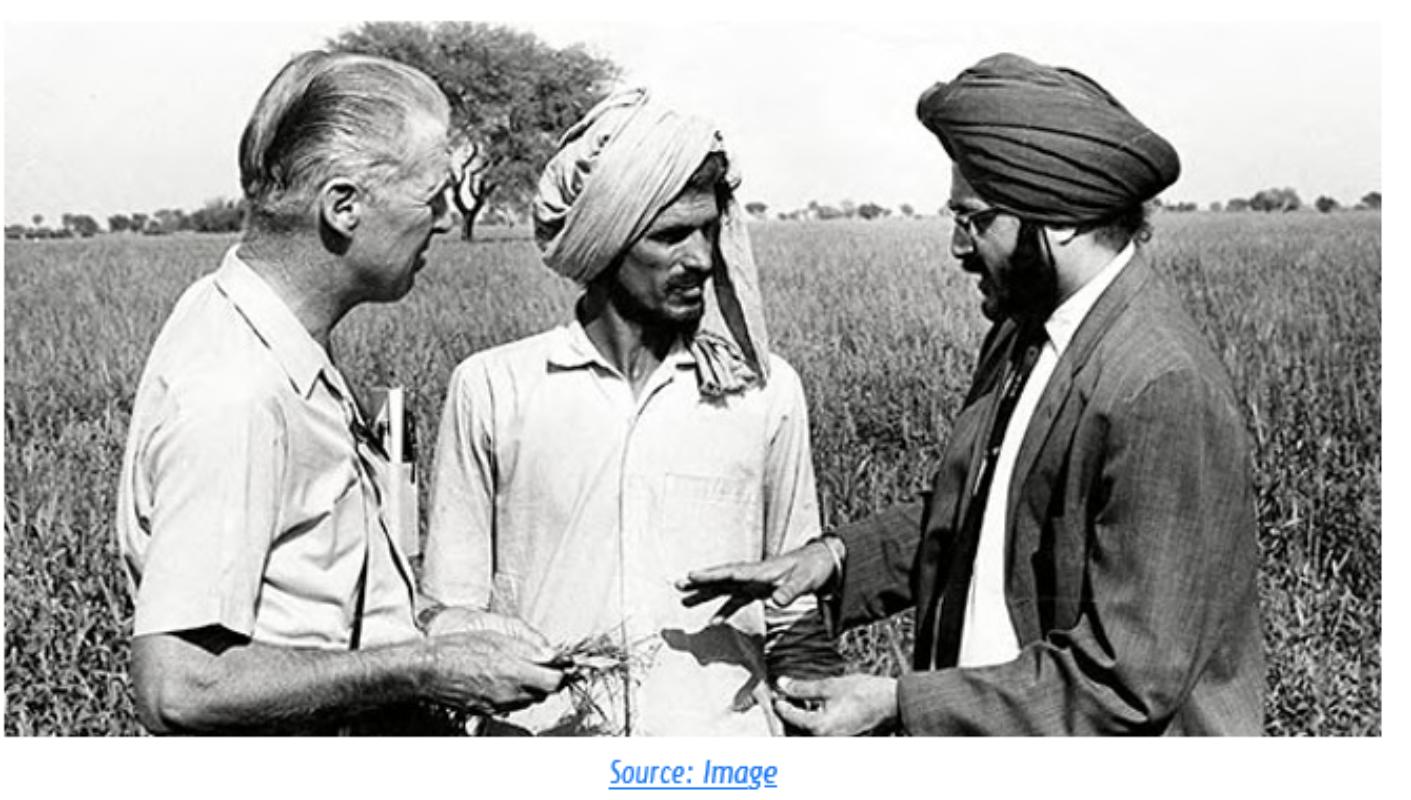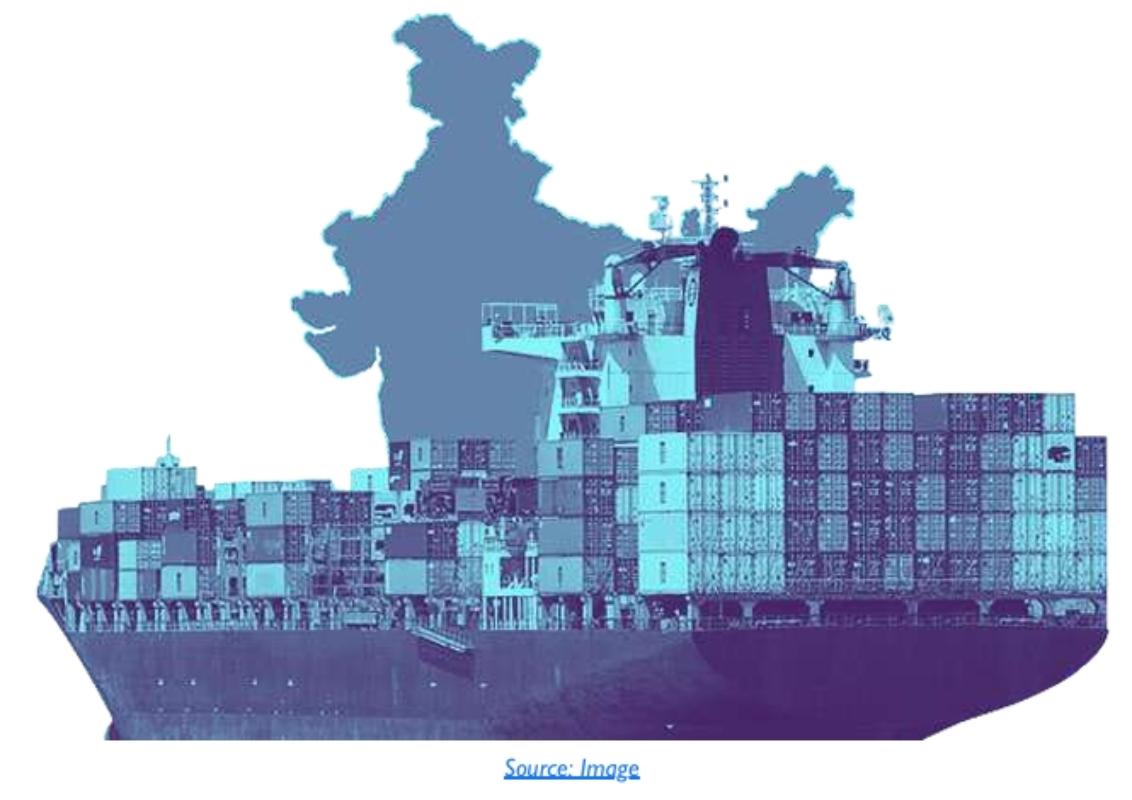The Indian economy and its challenges India has gone through about six years of NDA government. The achievements of the NDA include the Insolvency Code that allows firms to declare bankruptcy. The next big goal was the setting up of a Monetary Policy Committee of the RBI to fix interest rates at the RBI. The government also succeeded in bringing in the GST, finally, after a decade of discussion and debate. The government also ensured that fiscal deficit remained under control for most of the time.
After these are counted, the legacy that the government is best known for now is its startling decision on demonetisation. The PM’s unilateral decision to ban notes not only failed in flushing out hidden wealth but also caused significant damage to the economy1. The sudden decision had a two-fold impact on the Indian economy: an aggregate demand shock by reducing the supply of money, and, an aggregate supply shock by constraining availability of cash as a critical input for specified economic activities, such as purchase of inputs in the agriculture sector. Growth has slowed down to a historic low of 6% and unemployment climbed to an unprecedented high of 6.1%.
India is in a phase of economic development that poses difficult questions and seeks sophisticated solutions. It is the sheer size of the middle class that attracts investment even as other major economies namely China, Japan, the European Union and the United States slow down. The hope was that India with all its fault lines will achieve a high growth rate of over 9 per cent by 2020. This is despite that fact that nearly half the world’s poor live in India, with high malnutrition amongst its children (nearing 40 per cent according to NFHS-4). One half of India’s eligible population is either illiterate or barely educated.
The NDA government that came to power in India in 2014, clearly announced its social and economic intent. The economy picked up a little as oil prices went down, but then started a steady decline. This year too did not start well for the government at all. Private investment in India has gone to its lowest since 20042. What is even more worrying is that public sector investments are also coming down3. All this explains the general gloom in the job market. With no new investment coming in, there are no jobs being created and as the year goes by, the gloom spreads across sectors as including auto, airlines and telecom.
The rupee is at an all-time low of Rs 71 to a dollar4 and has added to the burden of the rising current account deficit5. Despite this weakening, exports have been declining and the trade deficit going up. The Indian stock market turned to be the riskiest in Asia last year. What hurt the capital markets most was the inexplicable introduction of a Capital Gains Tax and the collapse of ILFS, a major non-banking finance company. Foreign investment flows in India have been volatile for some time now6. Public spending on infrastructure went up, but not as expected. Global oil prices kept falling through the year in 2015 ending at 37 dollars to a barrel, last seen twelve years ago. However in 2017 and 2018, prices have again moved up and down. It is yet inexplicable and difficult to forecast how this trend will play out in the future7.
Unemployment: Where have the jobs gone?
The major problem that continues to haunt the government is the failure in creating jobs. Reducing unemployment was a major slogan given by the PM while campaigning in 2013 14. As per the Economic Survey (2015-16), the rate of unemployment has increased from 3.8% (2011-12) to 5% (2015-16). Additionally, in 2015 only 1.35 lakh jobs were added in eight labor intensive sectors, compared to 9.3 lakh jobs that were added in 2011 12. The latest data from the Periodic Labour Force Survey (PLFS) is even more dismal. Unemployment among urban youth in the age group of 15-29 years, has been consistently rising quarters and is at 23.7% in the last quarter. This is despite the urban youth getting better educated, as they are spending an average of 11 years in school, compared with 9.3 years spent by rural youth. The 1 million Indians, who enter the workforce every month are under stress.
The Telecom sector that has been a major creator of employment has also started reducing its numbers heavily. Campus placements also are under stress with Business schools and IT colleges reporting a remarkable fall in number of jobs. From July 2014 to December 2016, in the eight major sectors – manufacturing, trade, construction, education, health, information technology, transport, and accommodation and restaurant – only 641,000 jobs were created.
In comparison, these same sectors had added a total of 1.28 million jobs from July 2011 to December 2013. Specifically, jobs created by the Prime Minister’s Employment Generation Program (PMEGP), which generates employment in rural and urban areas by initiating new micro enterprises and small projects, has fallen by 24.4% from 428,000 in 2012-13 to 323,362 in 2015-16. Joblessness has increased after the demonetization drive and gone up further after the introduction of GST.
In addition to the lack of jobs, poor wages also are a matter of concern. Marginalised sections of society, with poorly trained human capital, earn much less than the national average of Rs 113,222. SC and ST households earn 21% and 34%, respectively, less than the average. OBC households fare better but still earn 8% or Rs 9,123 less than the annual Indian average. Among upper caste groups, Brahmins earn 48% above the national average and non-Brahmin forward castes, 45%. India is one of the most unequal countries in the world with the top 10% controlling 55% of the total wealth, up from 31% in 1980, according to the 2018 World Inequality report8. Muslims have lower income than average and earn an annual household income 7% less than the national average.
However, the major concern we have now, is that the rising tide of economic growth seems to have bypassed the marginalised populations. The Scheduled castes, Scheduled Tribes and rural folk have fallen behind on most indicators. The last six budgets have seen significant cuts in outlays to minorities, to primary education, to nutrition and to rural infrastructure. India’s future growth depends on an equitable growth across various sections and across the entire geographical map of the country. Inequitable growth will lead to social tensions and to regional conflict. This needs a big push towards harnessing human capital in the country, for solving both the supply and the demand side problems of labour markets.
Why a focus on human capital
We discuss here a few of the top concerns that impact India’s quality of human capital – namely education, urbanisation, jobs and poverty. Of course we have enormous challenges in other fields too, like the absolutely dismal lack of access to modern health systems for a majority of the population. The small scale sector, the export sector, energy, climate change, the environment and a host of other issues cry out for attention. In this paper we focus on the youth, job creation and the need for developing human capital.We have, according to the 2011 census 333 million youth, going up to 367 million in 2021 and 370 million by 2031.
The absence of jobs hurts the youth really hard and causes various kinds of socio economic problems. The controversy regarding the leakage of a government report on jobs comes from the realisation that unemployment has never been as high in the last four decades as it is today. On the rural front, incomes went down. Partially due to poor rains and also due to the government’s inability to keep up to its commitment on social sector spending. Disbursements on account of programs like the MNREGA fell behind schedule9. Large cuts in the Ministries of women and child welfare and in the Ministry of Health and Family welfare meant further fall in demand.
As rural India spent less money, rural demand failed to pick up. Except for a small surge during the festival season again, cities and towns in India also remain unwilling customers. Cash is a critical input in the agricultural production process and its unexpected shortage had an impact at many levels, including a slowdown in employment of labour and a dip in overall farm incomes10. And when we look at the job numbers that some private-sector people estimate, nearly 12 million jobs were lost in that episode. And, of course, we haven’t recovered them yet.
Education and Human capital
There are serious problems with respect to access to education itself and quality education is simply not available. 89% of kids of primary school going age of the richest 20 percent of the population attend school both in the rural and urban areas, while that proportion drops to 79% for kids in the poorest fifth of the population in rural areas and 78% in urban areas. But, attendance drops sharply when it comes to secondary school and becomes worse at the higher secondary level. Also, the difference between the richest and the poorest in enrolment widens sharply from the primary section to the secondary and higher educational levels.
The gulf between the poor and the rich widens as we go up the ladder. Only 6% of young people from the bottom 20 percent of the population attend educational levels above higher secondary in urban India, while 31% among the richest 20 percent of the population attend secondary school. The situation is substantially worse in rural India. Richer, urban children have better opportunities for higher education, essential for getting good jobs in the cities. The poorer children work in the informal sector at low wages and remain vulnerable11.
What is indeed sad is that across the country, 29 percent of children drop out before completing five years of primary school, and 43 percent before finishing upper primary school. Only 42 per cent get to complete high school. This ensures that India stands among the top five nations for out-of-school children of primary school age, with 1.4 million children in the age group 6 to 11 year olds not attending school. What does not help at all is that a number of schools are not equipped to handle the complete population. There is a teacher shortage of 689,000 teachers in primary schools. Just about 53 percent of schools have functional girls’ toilets and 74 percent have access to drinking water.
Some states have wide gender differences at the secondary levels. For instance, net attendance rates at the secondary level in Gujarat is 63% for boys and 43% for girls. Also the difference between scheduled castes and tribes and other categories widens at higher levels of education. It is particularly large for urban girls belonging to scheduled tribes at the secondary and higher secondary levels. Enrolment of Muslims is lower compared to those of other religions at every level, both for males and females. In urban India, while enrolment for Muslim boys in primary schools is only marginally lower, the proportion at the higher educational levels is substantially lower. Muslim girls enroll in comparable numbers in primary schools, but the drop-out rates at secondary levels are alarming.
Much of this can be attributed to the low levels of expenditure on education. According to the World Bank indicators, government expenditure on education as a percentage of gross domestic product was 3.8%. Compared to other poor countries it is abysmally low. The figure is 6.3% for Vietnam, 4.3% for Mali, 4.7% for Nepal and 5% for Rwanda. As a result, the state is unable to provide education infrastructure to a large number of the poor. It also results in primary schools rarely getting upgraded to secondary levels, forcing a number of our children to stop studying after primary levels as they are not able to travel long distances to continue their education.12
While there are various kinds of inequalities we see in modern India, nowhere is inequality higher than in access to higher education. This is despite Article 15 of the constitution that directs the governments to create equal opportunity and equity in access to all levels of education. Access to education, particularly to skills and to technical capabilities, is an essential element of escaping poverty and even in gaining access to health facilities and social security programs. Both market wages and human development indices depend on standards of higher education reached. Also stable high paced GDP growth requires skilled workers who can adapt to technology as it changes rapidly13.
However, in India, the share of illiterate workforce was 30.7 per cent in 2016-17, and this is twice their 15.2 per cent contribution to the GDP. On the other hand, 9 per cent of graduates contribute over 29 per cent to the GDP. Labour productivity is critical for economic efficiency. East Asian economies developed at a fast pace primarily because of their factor productivity and capital per worker.
Estimates from NSSO’s ‘participation and expenditure in education’ survey show that only 4.7 per cent of all population has completed post higher secondary education. There is large gap in the attainment levels in higher level education between rural and urban areas. Just above 2 per cent of the rural population is educated up to a level higher than secondary level as compared with 12 per cent in the urban part of India. There clearly is an urban bias in access to higher level education, and also that the education linked jobs are concentrated in urban areas.
Another dimension where the achievement differentials are high is between genders; 6 per cent of the male population is educated up to post-higher secondary level in contrast with just 3.4 per cent of the female population. Socio-religious groups show extremely high variation in attainment, with a low of just about 2 per cent or less for the Muslims and H-SCs/STs, through to 12 per cent for Hindu-General or upper castes.14
Only 3.7 per cent of rural population in the age group 22 years and above has attained higher education. At the all India level, only 8.2 per cent of the population have attained any degree higher than the higher secondary. There is indeed a hugely unequal access to higher education in the country and this needs some urgent solutions.
Conclusion
It is not mere coincidence that Banerjee, Kremer and Duflo have won the Nobel this year. They have, in their extensive work with NGOs across the world noted that an educated, healthy, well-fed population affects the rate of return on investment, and is thus crucial to kick-starting the process of rapid development through rapid human capital development. Their work confirms the central role of schools for economic growth. Their evaluation of a program that hired tutors for underperforming students in India, and another that studied a computer-assisted learning program, concluded that both were effective interventions. They also found significant wage gains from public education spending in India.
The simple solutions come by way of
- Better quality of primary education
- Teaching at the right level instead of focusing on completing the syllabus
- Cash incentives for attendance, especially in the poorest states
- Improving the quality and the number of teachers
- Making schools and teachers locally accountable
- Evaluate, monitor and publish performance results for schools
- Increase mean years of schooling
- Better quality of technical education
- Improving health and nutrition status
- Focus on the weak child15
India’s economic policy continues to search for solutions towards ensuring inclusive equitable growth. The problems remain fearsome though several of them are being tackled. Health systems have ensured that infant mortality has reduced and life expectancy has gone up now to nearly 68 years. Infrastructure is not as poor as it was, at least in some urban locations. Education has improved in terms of enrolment at the primary school level, though the quality still suffers, and the problem becomes more acute at the higher levels. The core problem is that the quality of human capital remains poor, resulting in higher unemployment, poor productivity and low wages. The simple solutions mentioned above are worthy of examination, pilot testing, evaluation, if appropriate through RCTs and then large scale execution.
Bibliography
Government of India, Economic Survey, (Annual), Ministry of Finance, New Delhi.
Gupta, K., Arnold, F., & Lhungdim, H. (2009). Health and living conditions in eight Indian cities.
National Family Health Survey (NFHS-3) India 2005-06.
http://164.100.47.5/newcommittee/reports/EnglishCommittees/Committee%20on%20Health%20
and%20Family%20Welfare/82.pdf
http://economictimes.indiatimes.com/markets/stocks/news/with-a-25-year-history-as-proofheres-
why-sensex-can-end-2016-in-red-too/articleshow/50570115.cms
http://economictimes.indiatimes.com/news/economy/infrastructure/27-new-cities-selectedunder-
centres-smart-cities-mission/articleshow/54423653.cms
http://secc.gov.in/reportlistContent
http://www.livemint.com/Opinion/Yd6BOR2JYjMVA2zATmHyGM/India-needs-a-weaker-exchangerate.html
Mitra, A., & Murayama, M. (2009). Rural to urban migration: a district-level analysis for India.
International Journal of Migration, Health and Social Care, 5(2), 35-52.
Reserve Bank of India, Report on Currency and Finance, (Annual).
Selvaraj, S., & Karan, A. K. (2009). Deepening health insecurity in India: evidence from national
sample surveys since 1980s. Economic and Political Weekly, 55-60.
Sengupta, K. (2015). Determinants of Health Status in India. Springer
September 13, 2016 http://in.reuters.com/article/india-inflation-cpi-data-idINKCN11I1BH
Singh, Sanskriti, and Sophia Sharda. “FDI in India.” The International Journal of Business &
Management 2.4 (2014): 82.
Foot Notes:
1 The RBI annual report for 2017-18, shows that almost all the banned banknotes, or 99.3% of the notes withdrawn, were returned.
2 Investments fell to a 14-year-low. Indian companies announced very few new projects, 53% lower than what was announced in September quarter, and 55% lower than the year-ago period. The trend of lower investments continues, with 2019 doing generally worse than 2018 that was already lower than the previous year
3 New public sector projects also declined. Fresh investment announcements in the public sector fell 37% on quarter and 41% on year to `50,604 crore—the lowest level since December 2004.
4 The rupee has depreciated by 10 per cent against the dollar since February 2018
5 http://www.livemint.com/Opinion/Yd6BOR2JYjMVA2zATmHyGM/India-needs-a-weaker-exchange-rate.html
6 Singh, S, and Sharda. “FDI in India.” The International Journal of Business & Management 2.4 (2014): 82.
7 Hamilton, J. D. (2008). Understanding crude oil prices (No. w14492). National Bureau of Economic Research.
8 The National Family Health Survey 2015-16 (NFHS-4) showed that 45.9% of ST population were in the lowest wealth bracket compared to 26.6% of SC population, 18.3% of OBCs, 9.7% of other castes and 25.3% of those whose caste is unknown
9 Shankar, S., &Gaiha, R. (2013). Battling corruption: has NREGA reached India’s rural poor? OUP Catalogue.
10 The Economic Survey for 2016-17, authored by the former chief economic adviser Arvind Subramanian and released in January 2017, also echoed these concerns.
11 Muslims have the highest percentage of illiterates aged beyond 7 years at 42.72%, as compared to 36.40% among Hindus, 32.49% among Sikhs, 28.17% among Buddhists and 25.66% among Christians. Jains have the highest percentage of literates above 7 years of age among India’s religious communities, with Census India 2011 finding 86.73% of them as literate and only 13.57% as illiterate. As compared to 63.60% of Hindus and 57.28% Muslims in the ‘literate’ category, the percentage of literates among Christians is 74.34%, among Buddhists 71.83% and among Sikhs 67.51%.
12 The RTE mandates compulsory education for children in the 6 to 14 age groups. How then can it justify making schools only for the 6 to 10 year olds? What the RTE now implies is that there cannot be stand alone primary schools anywhere, and certainly not in areas where there are no other schools. All primary schools must immediately be converted to secondary schools
13 Education is indeed the driving force for economic and social development that is highly correlated with levels of education. The mean years of schooling, an indicator of educational achievement in a country is as high as 12 years in the USA and 5 years in India. http://www.nationmaster.com/graph/%20edu_ave_ yea_of_sch_of_adu-education-average-years-schooling-adults
4 Shariff, A. (2009). Rural income and employment diversity in India during 1994 and 2005. Journal of Developing Societies, 25(2), 165-208.
15 Banerjee has often pointed out that poor levels of learning are due to teachers’ focus on somehow “completing” the syllabus rather than ensuring that every pupil has understood the parts already covered. “Teaching at the right level”— special teaching for those lagging behind — is what works. This also solves the problem of high level of drop outs, through offering corrective education to the weakest children.
Image by Nattanan Kanchanaprat from Pixabay








